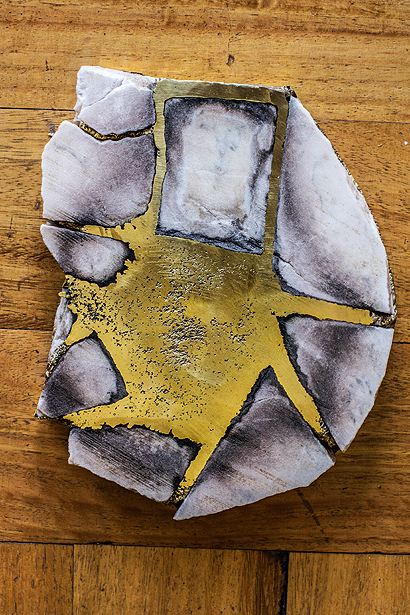|
The young Santiago-based studio has quickly gained an international reputation for its computer-free experiments in parametric design The Chilean studio gt2P (great things to People) started out in 2009 as a partnership between Guillermo Parada and Tamara Pérez, who had met while studying architecture at the Catholic University of Chile in Santiago and discovered a shared interest in using the digital tools of architecture to design objects for the home. Along with third founder, Sebastián Rozas, who brought his interest in architectural design to the team, the studio has flourished and now comprises nine members. Represented by Galerie Gosserez in Paris and Coletivo Amor de Madre Design Gallery in São Paulo, and with pieces distributed by Milan taste-maker Rossana Orlandi among others, the studio is gaining recognition for its combination of digital design and more traditional manufacturing. “The first projects we did were all about design and manufacture in a completely digital way,” says Eduardo Arancibia, engineer and chief executive of the studio. “But so many of the digital processes we used required some kind of manual intervention, and it was then we realised our work acquires a new value when we mix technology with traditional knowledge.” Representative of the studio’s approach is Paracrafting, an ongoing “analogue parametricism” project. A central part of the project is the Catenary Pottery Printer, a machine that attempts to translate computational logic and automated processes to the material world. The “printer” is a wooden frame, in which sheets of muslin are hung before liquid clay is poured into the fabric. The clay drips through into a container below, leaving a thin layer behind in the muslin which hardens into a small dish. Where a digital approach to parametric design would create an algorithm in response to a given data set and generate forms accordingly, the analogue approach seeks to generate forms based on the behaviour of the clay and muslin in response to a set of physical conditions. “We wanted to speak about parametric design without the use of computers and digital fabrication laboratories,” Arancibia explains. “This project gives us a new scope that is more parametric and less digital, which means we can generate dialogues in academic contexts but also with communities of artisans.” The studio’s most recent design project is topical and ambitious. A collaboration with Brazilian gallery Coletivo Amor de Madre, Bridging America aims to preserve and spread the legacy of American crafts by linking designers and craftspeople through new technology and traditional techniques. The first stage of the work presents collaborations between artists such as Vicson, Ines Carter and Rene Lagos – all from Chile – and Sutaco from Brazil, with designers Ariel Rojo from Mexico and Guto Requena from Brazil, as well as gt2P. The work was previewed at the 2014 Milan Furniture Fair, but the final exhibition will take place from November 2014 at the Museum of Arts and Design in New York as part of the show, New Territories: Laboratories for Design, Craft, and Art in Latin America. Alongside the studio’s interest in linking digital and analogue technologies, the influence of Chilean craft looms large. “Our work has two dimensions,” Arancibia says, “a more ‘scientific’ one related to the systematisation of knowledge, and an ‘artistic’ one where we try to connect our projects with our cultural and local heritage.” In some respects, this has been made easier by the fact that the Chilean design industry has grown significantly in the last few years, garnering widespread attention in design capitals around the world. With the launch of its first collection for Cappellini – based on the Tarrugao jars pictured opposite – in early 2015, there’s a bright future ahead for gt2P.
Bridging the Gap, test no.2, Brass Cast in Cracked Marble, 2014
Shhh The Hope Keeper mural, Galerie Gosserez, 2013
Catenary Pottery Printer, 2013 |
Words Crystal Bennes |
|
|






















